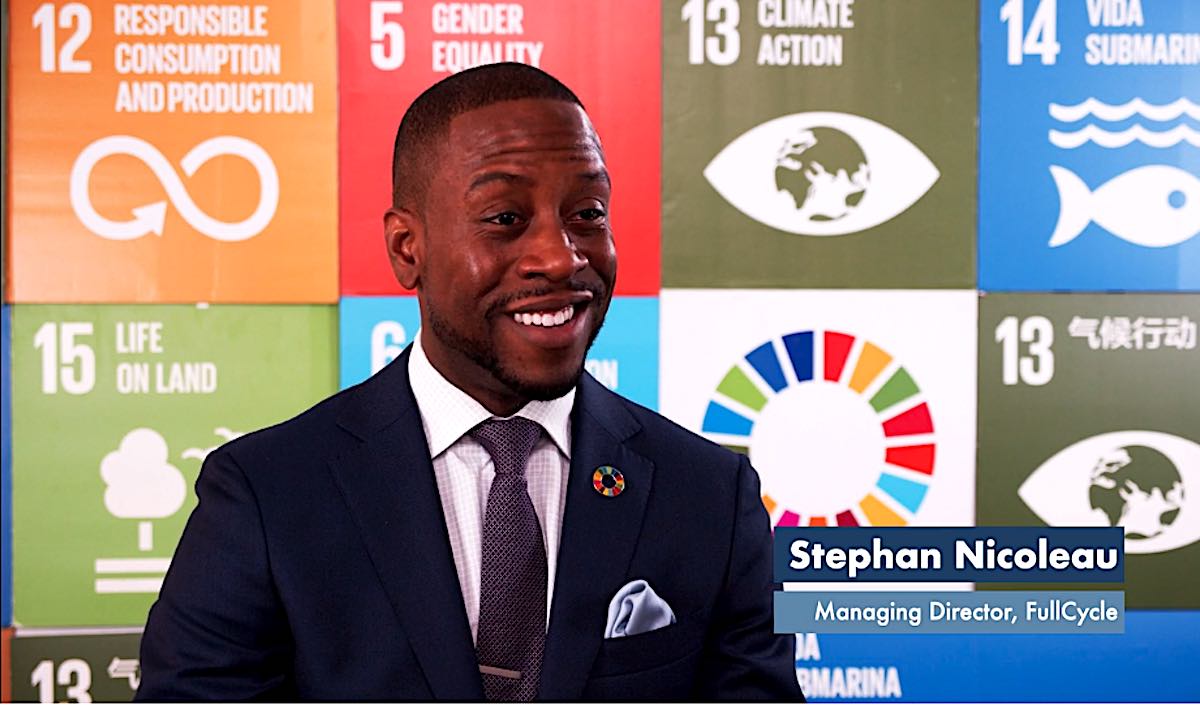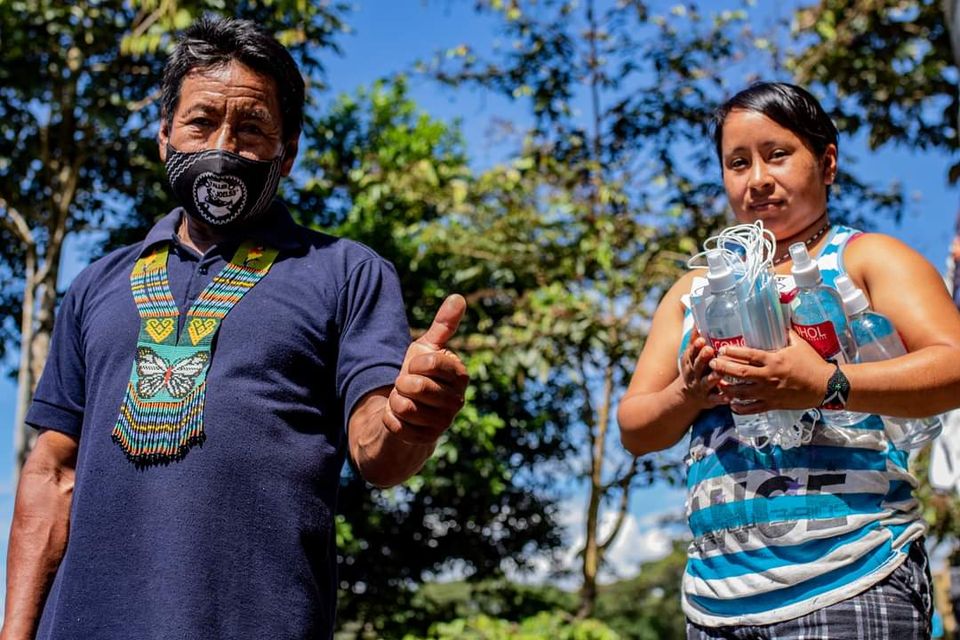Overcoming today’s global challenges and creating positive change requires collaboration and innovative solutions from every sector and corner of society to enable all of us to thrive in a healthy environment.
Impact investing, grounded in a human rights approach and stakeholder engagement, can play a critical role to amplify the change we need, helping to foster a more accountable and rights-respecting economy.
Such an approach can help investors proactively identify and account for social risks, impacts, and opportunities, and therefore maximize positive impact at the investment and systems levels. Communities and individuals closest to a situation are most aware of risks and opportunities and are key to helping work toward positive outcomes.
One example is the worker-driven social responsibility movement, which includes Milk with Dignity and the Fair Food Program. The Fair Food Program worker-driven model, with worker-to-worker education and accessible grievance mechanisms, has enabled tomato farmworkers to reduce sexual harassment, forced labor, and wage theft in the tomato supply chain.
What is a human rights approach?
A human rights approach means instituting investment practices that recognize that human rights are inherent in what it means to be human and have dignity, regardless of race, sex, nationality, ethnicity, language, or any other status.
Human rights are inalienable, cannot be bargained or traded away, and should be upheld regardless of financial returns or business success. Rooted in the UN Guiding Principles on Business and Human Rights, this approach involves identifying a business’s impacts on human rights, embedding respect for those rights across its operations and value chains, conducting human rights due diligence, and providing access to remedy when harm occurs.
Woven through each of these elements is meaningful stakeholder engagement, including with critical voices of people who have experiences (positive and negative) with the business and can point out gaps and opportunities to improve respect for human rights.
A human rights approach in impact investing involves investors, investees, and other actors in the impact ecosystem aligning with the UNGPs and using strategies and tools to center investment decisions and outcomes on people and their communities, alongside consideration of financial performance.
This approach goes beyond mitigating risk through box-checking exercises to using the power of investments to realize human rights and avoid harmful impacts. It means engaging and partnering with people affected by the investment throughout the investment lifecycle and building accountable relationships with them to seek to understand and address positive and negative impacts.
Why is a human rights approach important in the impact space?
The reasons why a human rights approach matters are largely the same for impact investing as they are for the rest of the financial services industry. There may be regulations that require action on human rights, and when harm occurs, the financial, legal, and reputational fallout can be significant. In addition, media, civil society, and investors are calling on companies to account for human rights risks and impacts within their operations and business relationships. Undergirding these reasons, of course, is the moral imperative that respecting human rights is simply the right thing to do.
However, a human rights approach seems even more important to impact investing, where the general objective is to achieve positive, measurable outcomes while generating returns. Through investor engagement, whether through investment analysis, dialogue, letters, or shareholder proposals, there are opportunities to take a rights-based approach. This approach provides a framework that seeks to realize positive outcomes of impact investing tools, so that community leaders can create lasting change by their own design. It provides a process to transform how we view finance and see it as a means to advance respect and dignity throughout the economy.
What does stakeholder engagement look like in practice?
Community-driven solutions are often the best solutions. For example, where Indigenous Peoples are partners in an investment, or where a project impacts Indigenous communities and territories, the right to free, prior, and informed consent, or FPIC, is foundational.
This right enables Indigenous Peoples to give or withhold consent to a project that may affect them or their territories. Integrating FPIC into project design is critical not only to secure consent and avoid risk from rights violations, but also to structure deals and investments that rectify historically unequal power and economic imbalances.
Embedding FPIC in investment design and decision-making can help ensure comprehensive risk due diligence, consent-based project design and deal-making, and equitable partnership. This means investors are not coming with a solution; rather they can create space for new solutions and help enable more mutually beneficial outcomes for all. This can be a model for impact investments to promote community design and ownership.
While a company can adopt human rights commitments on paper, it is a rightsholder who is often best positioned to know if they are being implemented in practice. Recognition of rightsholders is imperative because impacts are felt most closely by them and their communities.
For example, after investors and Native leaders successfully engaged and advocated together to change the Washington Football Team’s racist name and logo, over 150 K-12 schools in the United States dropped their racist mascots, meaning that Native children in these places can enjoy and participate in sports without experiencing the racism or bias that this type of branding perpetuates.
Recommendations for investors to advance this approach
- Identify the standards informing your investment analysis and engagement priorities that are relevant across different industries. This might include evaluating how a company’s business model impacts human rights, such as providing equitable access to goods and services free from discrimination, or how it engages with its stakeholders, such as work with dignity, respecting workers right to organize, or the right to a clean and healthy environment.
- Seek opportunities to incorporate insights and perspectives from stakeholders (and rightsholders) throughout the research and engagement process. To understand how a policy or commitment works in practice often requires perspectives from those who are closest to the activity. This might include citing research from grassroots organizations, partnering with stakeholders to identify companies with which to engage, or incorporating stakeholder needs and priorities into your engagement process. This can also involve encouraging a company to make things right if there has been harm.
- Embrace transparency with stakeholders about the potential limitations of investor tools. To work in collaboration with rightsholders also requires working with humility and seeking to build mutual, accountable, and trusting relationships.
- Lift up and amplify what works. Learning from stakeholder expertise and experience, investors can use their voices and leverage as shareholders to seek improved outcomes on respect for human rights that further stakeholders’ goals. Investors can encourage companies to adopt solutions that are designed by rightsholders and lead to meaningful human rights outcomes, like stakeholder-designed FPIC processes or worker-driven social responsibility models.
- Consider not only who to engage, but also how to engage. To ensure that interactions respect the rights of those involved, investors should remove inherent power imbalances and establish an even playing field, through facilitation and mediation by third parties when needed.
Against a backdrop of a global pandemic, climate crisis, and major social, economic, and political upheaval, it seems not only fitting but also urgent to anchor solutions – and the future of impact investing – in a human rights approach.
Kate Finn is executive director of First Peoples Worldwide. Mary Beth Gallagher is director of engagement at Domini Impact Investments and Kindra Mohr is manager of financial services at BSR.
Disclosure: This article is intended for informational purposes. The authors of this article, Kate Finn, Mary Beth Gallagher, and Kindra Mohr are not registered investment advisers. Kate Finn and Kindra Mohr are not employed by or in any way affiliated with Domini Impact Investments (Domini). The information presented is believed to be factual and up-to-date, but Domini does not guarantee its accuracy and it should not be regarded as a complete analysis of the subjects discussed. All expressions of opinion reflect the judgment of the author as of the date of publication and are subject to change and do not constitute investment advice.











